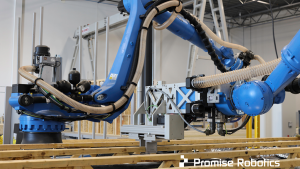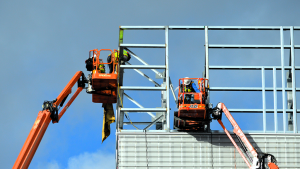Researchers at the University of Waterloo have come up with a new tool that uses artificial intelligence (AI) to analyze building inspection reports and help make spending decisions about structural repairs more objective.
The tool is a computer model that can search the reports for keywords and determine which work is most urgently needed. It was tested successfully on inspection reports on the roofs of hundreds of schools managed by the Toronto District School Board (TDSB) but researchers say it can also be used for other applications.
“It essentially picks up on different aspects from the work of the building reports,” explains Kareem Mostafa, an engineering PhD student at the university who led the project as part of his research. “Some of the parameters are based on how old the building is and when was the last time it was repaired.
“It gives a picture of what repairs need to be done but it also gives you an indication of how bad we need those repairs.”
The tool uses text mining techniques to look for keywords in the building inspection reports. It identifies the damage type and the extent of the problem from the damage descriptions in the inspection reports. Then, unsupervised clustering is used to classify the damage into four levels of severity.
By analyzing the frequency of about 30 keywords such as “damage” and “leaks” or “repair required” and “past its service life,” plus factors like the age of roofs, the AI software can identity the urgency of damage repair or replacement.
“We try to extract the word that indicates damage and the jargon that indicates damage,” says Mostafa. “We pick up on those and the more frequently these words occur in the language the worse the condition and the more imminent a building is in need of repair.”
A paper on their work was published in the Journal of Building Engineering.
For the TDSB study, inspection reports on the roofs of 400 schools were examined. A sizeable portion of the board’s schools are more than 40 years old.
The province provides annual capital renewal funds to school boards, but it remains a challenge deciding how to allocate the budget to the most deserving assets.
The schools have HVAC, electrical and structural systems, many of which are in critical condition and management makes decisions annually on which projects to fund and which can hold out longer for future action. Given the large number of schools and systems requiring action, the decisions are difficult to make.
The aim of the research done by Mostafa and the rest of his team — Tarek Hegazy, a professor of civil and environmental engineering at Waterloo, and Ahmed Attalla, a project manager with the school board — was to classify the criticality of the repairs and help the board spend money where it makes the most sense.
At the TDSB, external inspection consultants are hired to inspect the schools and submit reports for individual facilities that provide data about the condition of the schools and subsystems.
Fund allocation decisions are analyzed using spreadsheets and during capital planning meetings upper management combines the information along with feedback from various sources, including maintenance and operations teams, to develop a three-year capital plan with funds for the repairs.
The total cost for repairing the roofs on all the TDSB schools was roughly $135 million and they were all deemed high-priority events, says Mostafa, but the analysis was able to separate the highest priority repairs and found only 10 per cent were most critical. This allowed the TDSB to figure out what schools needed to be fixed right away and which repairs could wait.
Researchers now want to incorporate other kinds of data, including AI analysis of photographs, into the assessment model so it can be used to prioritize other types and components for municipalities. They are also looking at tweaking the model to look at different elements such as columns and walls and doors and windows by changing keywords.
For example, the word flashing is not really applicable when inspecting a wall or column so the model can be “tweaked here or there,” says Mostafa, to make it applicable to other elements so it’s able to provide an overall assessment of an entire building.
The model provides a snapshot in time of a building, so researchers are also trying to figure out how to use the model to predict what will happen to a building over a period of time if, for example, if repairs are delayed.
According to the research paper, an inability to efficiently utilize inspection data has led to problems in the past. One example was the threatened failure of the Oroville dam spillways in 2017 that forced 200,000 Californians to evacuate. Despite the critical condition of the dam, it was not on the California governor’s $100-billion wish list for rehabilitation.
“As such,” the research paper notes, “there is a need to develop a smart data-driven system that is able to provide timely, detailed, and unbiased insights on how different assets should be assessed and ranked in terms of rehabilitation/renewal needs.”










Recent Comments